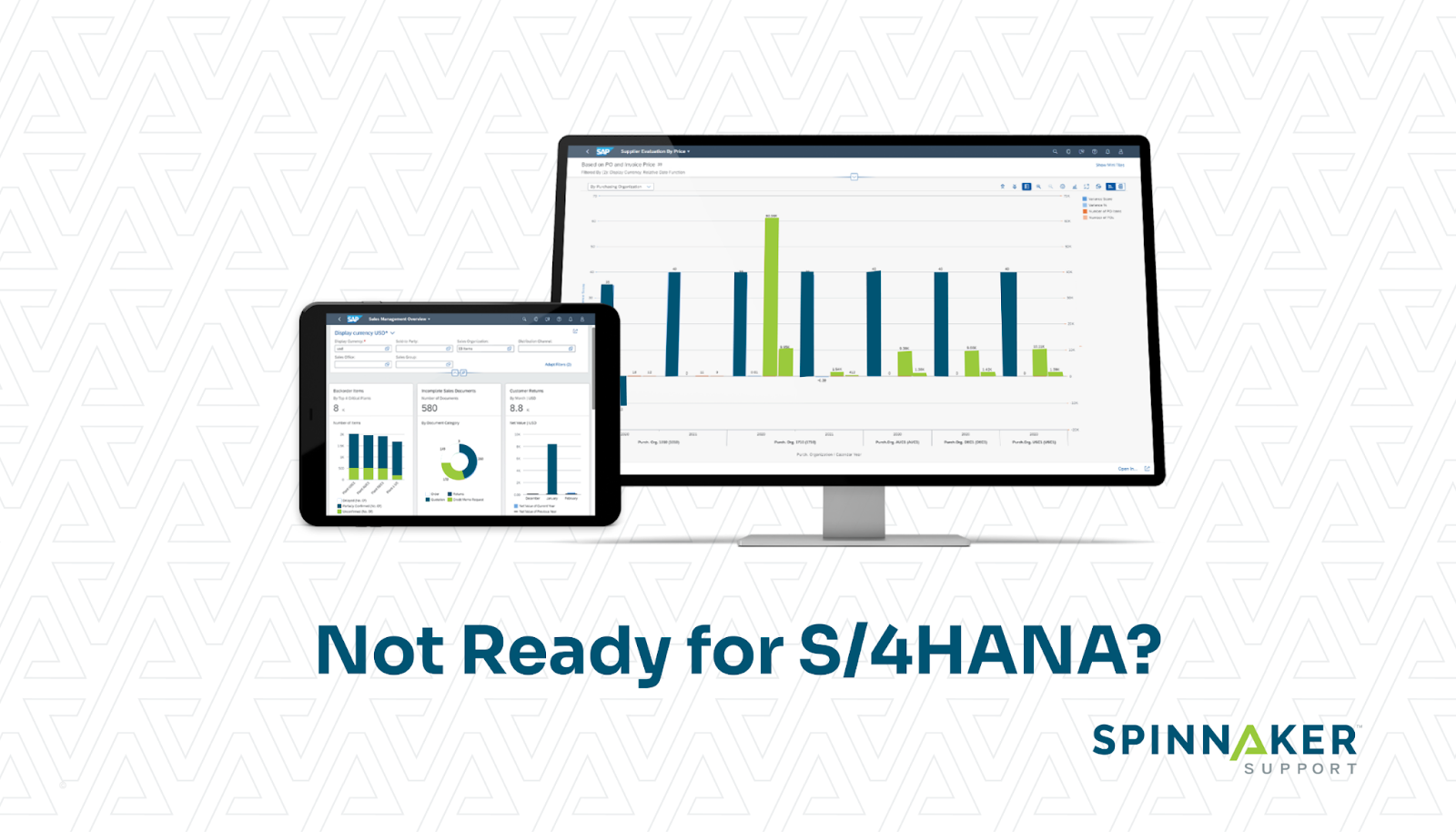
S/4HANA is the most recent release of SAP’s flagship Enterprise Resource Planning (ERP) software, which aims to be the future of intelligent enterprise management with features such as cloud-deployment, in-memory databasing, and real-time analytics.
In an effort to persuade more users to move to S/4HANA, SAP will soon discontinue support for earlier releases like SAP Business Suite 7, Business Suite 6, and Business ERP Central Component (ECC).
But some organizations may not be ready to migrate to S/4HANA, especially companies that have invested deeply in customizing their existing ECC processes. And it’s well-known that migration can be a long, grueling, and expensive process.
So what options do you have if you don’t want to migrate or simply need more time? What’s the best way to get technical help even after SAP discontinues support? And how can you stay within your IT budget in the face of all these changing needs?
We’ll answer these questions and more as we consider how SAP users can leverage the benefits of third-party service providers like Spinnaker Support.
S/4HANA adoption timelines
SAP has shifted its focus away from ECC and its functionalities, instead allocating 20% of its revenue towards S/4HANA R&D. In line with this commitment to S/4HANA SAP has decided to end support for SAP Business Suite 7 on December 31, 2027.
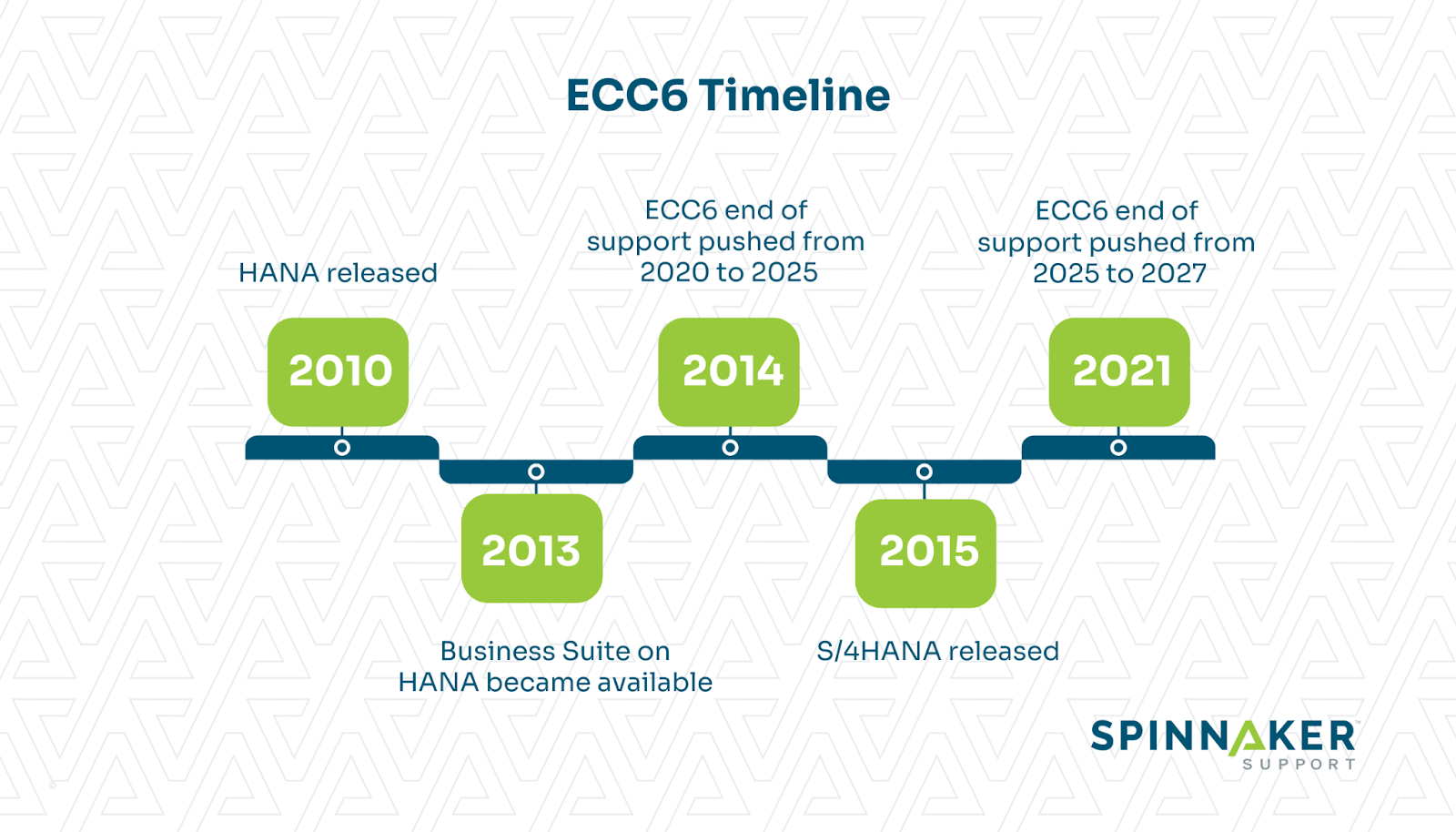
ECC users can opt to pay for extended support up through 2030, but it comes with an extra 2% fee and limited scope, and there won’t be any support available after 2030, period.
But even with these deadlines, 69% of customers have still not moved to S/4HANA (as of December 2022). That alone should tell you something about the size of the challenge presented by migration.
Whether you take the greenfield approach or brownfield approach, transitioning to S/4HANA is a significant undertaking. Enterprises may spend around $10 million or even $100 million for new software implementation. These costs could be related to software licensing, implementation services, training, and potential downtime. Plus, it can take months or even years to implement the new system. Additionally, 47% of Enterprise Resource Planning (ERP) implementations exceed budget.
S/4HANA migration: Challenges
Let’s take a closer look at the specific technical and logistical hurdles that organizations have to overcome when migrating to a new ERP.
Complexity of migration
Transitioning to S/4HANA is more than just a simple system upgrade. For many organizations, it’s akin to a full-scale implementation. It often involves consolidating and rationalizing complex and fragmented legacy business models. This includes harmonizing data structures, standardizing processes for business networks, and integrating various systems.
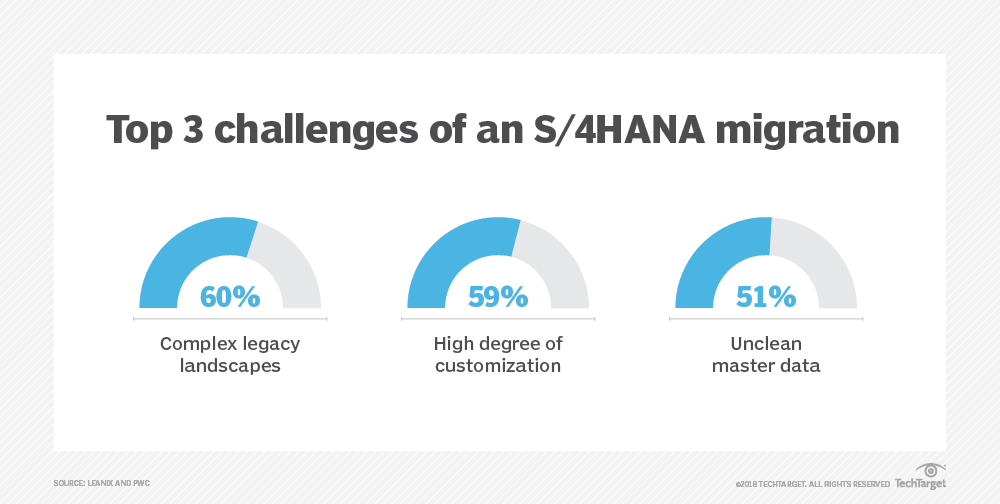
Unclean master data
Unclean data can lead to errors in data mapping, negatively affecting the accuracy of data transferred to the new system. And it can be expensive: poor data quality can cost an organization an average of $12.9 million.
Lack of business case
Many organizations may need a clear business case that justifies the investment and effort required for a S/4HANA migration. Organizations must be able to rationalize the value of migration in terms of improved efficiency and cost savings.
Change management
Some employees may resist learning new processes or fear their job roles will be affected. Hence, it becomes necessary to keep employees informed about the migration progress, provide updates, and address any questions or concerns that can ask for additional resources and time.
Customizations
Migrating from an older system to S/4HANA often requires re-evaluating customizations. Many organizations have well-established customizations designed around their existing business processes for production planning, financial planning, human resources, project management, and quality management. Imagine the workload required to re-engineer these if the new platform doesn’t line up.
Downtime and business disruption
The transition involves migrating data, functionalities, and processes, which can lead to temporary system downtime, resulting in a loss of productivity and potential revenue.
Maturity
S/4HANA comes with advanced technologies. It requires a certain degree of maturity in core business processes, technology infrastructure, and data management practices. It indicates the readiness and preparedness of the organization to undergo the migration process.
Though SAP has a ‘Rise with SAP’ program to help increase adoptions, 39% of users say that it has minimal value. In our experience, it’s wise to evaluate your readiness for S/4HANA instead of just choosing migration because of the deadline pressure.
Evaluate whether you are ready for S/4HANA
Here are some criteria to help you decide whether to move to SAP S/4 HANA.
- Does your current infrastructure meet the requirements for S/4HANA, such as hardware, operating systems, and databases?
- Do you have other IT priorities to achieve before a S/4HANA migration?
- Do you have a change management plan in place to facilitate the transition?
- Have you analyzed the costs of migrating to S/4HANA and determined the potential return on investment?
- Does your organization have the resources to implement the HANA cloud successfully and on a reasonable timeline?
- Is ECC still working well for you? Is the support deadline your main cause of migration pressure?
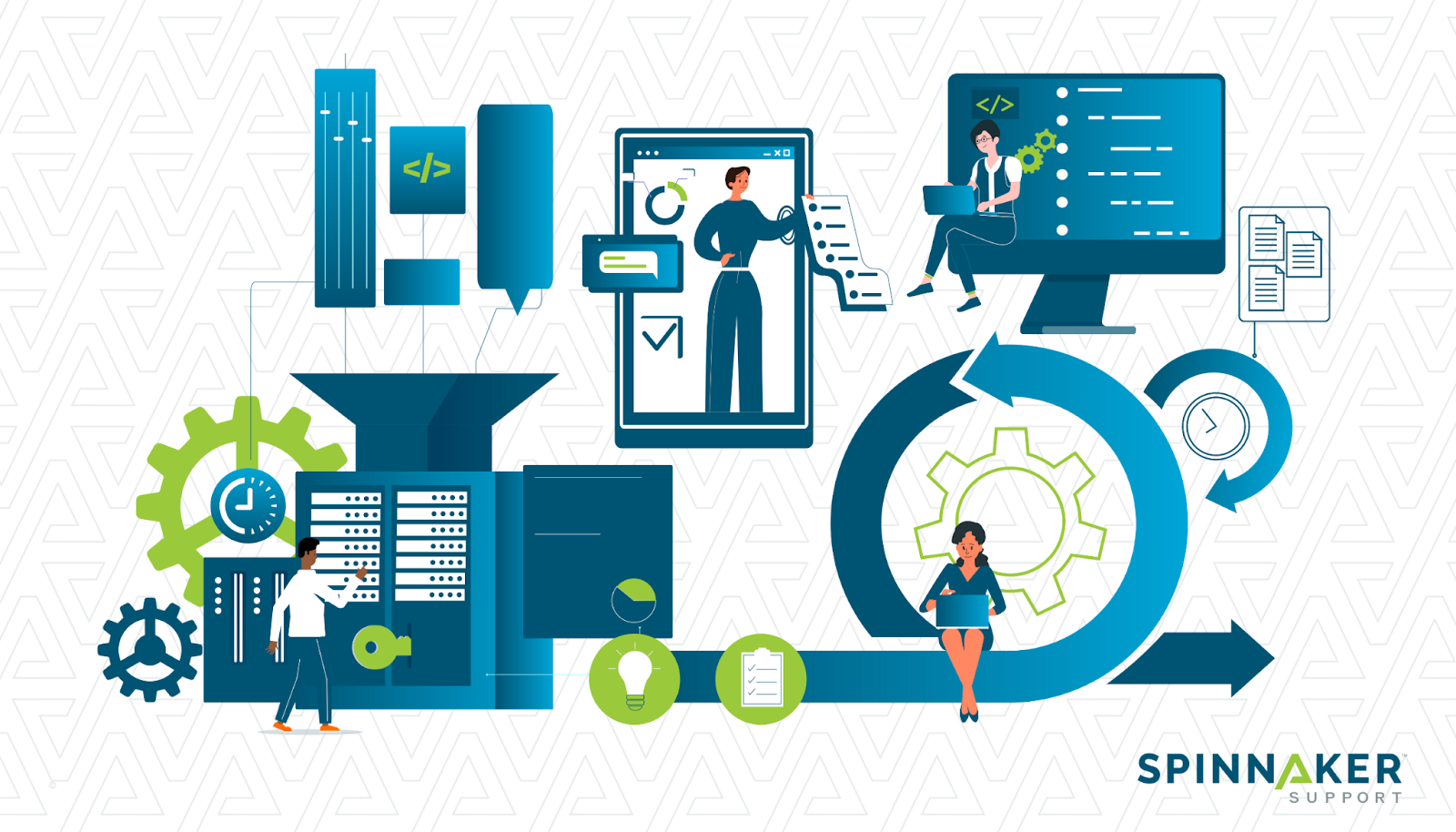
After going through these questions, you may decide that you:
- Want to migrate
- Want to delay the migration
- Don’t want to migrate
For any of these cases, you’d want to have support available. Vendor support for SAP typically includes general queries, security updates, break/fix services, and tax and regulatory updates.
However, in our experience, it has some specific challenges. For example, it’s costly and doesn’t support custom code issues.
Further, if you don’t want to migrate to S/4HANA, you’ll be left entirely without support after SAP’s 2027 support sunset date. That can bring a lot of disadvantages. You’ll have to fix issues yourself; there can be security and interoperability issues and no tax or legal updates.
This doesn’t mean you have to be left out in the cold, though. A third-party support (3PS) provider like Spinnaker Support can help you control costs, deliver comprehensive services, and provide personalized support — before and after SAP support ends.
Why hire third-party support
What exactly is third-party support, and what are its benefits? Third-party support refers to the assistance provided by external parties not directly involved with a particular vendor.
For example, at Spinnaker Support, we offer 3PS services for SAP, Oracle, JD Edwards, and Microsoft. We started in 2008 and have since worked with 1,300+ clients like Mitsubishi, Toyota, Liberty Mutual, Varsity Spirit, Johns Hopkins University, and Penn State.
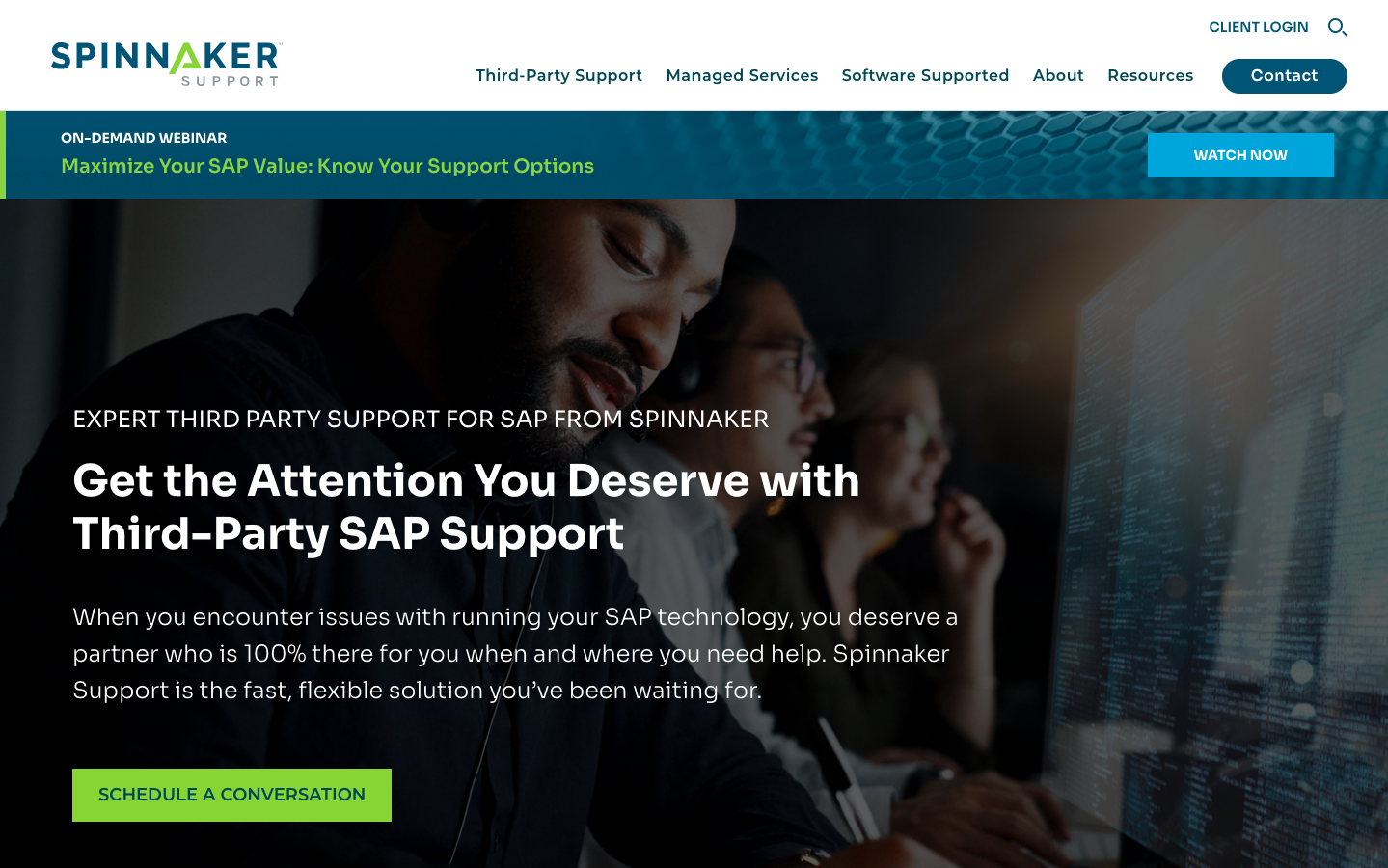
By opting for 3PS, businesses can simultaneously save money and improve support outcomes. Here are some benefits you might expect:
Increase the lifespan of your current SAP software
Migration can take months to complete and may end up being even costlier than the license cost itself. Add up the cost of hiring a team of consultants for the implementation, including business development, engineers, and admins, and you’ll see how expensive it can be.
However, if you don’t have a strong business case for moving to S/4HANA and want to delay your migration, Spinnaker Support can help.We offer lifetime support for SAP products to optimize database performance and uptime for as long as you need.
We consult each customer to develop personalized roadmap planning. This allows you to increase the lifespan of existing SAP software and migrate on your own schedule instead of following SAP’s roadmap. This way, you can save the costs associated with migration and fund new IT projects that are more urgent and valuable for your business.
Save support costs so you can free up IT spend
Vendor support isn’t cheap. The typical cost of SAP support is 20% of license fees, and maintenance fee increases by 2-4% every year. For example, SAP increased its on-premise software support cost by 3.3% in 2023.
In contrast, Spinnaker helps you save 50-62% on support costs while providing support for even end-of-life products. These savings can help you to invest in other business opportunities.
For example, D+M Group didn’t want to upgrade from their SAP ECC6 plan and wanted to reduce their maintenance fees while also enjoying personalized service. They opted for Spinnaker’s third-party support, and over five years they’ve saved an estimated $3.75M, which would have otherwise been spent on vendor support costs.
Get personal support and rapid response
If you raise an issue with SAP, the first step of resolution will be self-service through their knowledge bases. If you don’t find an answer in their repositories, you can raise a ticket, which they may respond to in one business day.
At Spinnaker, we provide a swift connection to an expert within 15 minutes, and you’ll get only SAP experts, not junior-level support technicians. Our ITIL-level 2 and level 3 support engineers give you one-on-one help through complex issues, and are backed by level 4 experts in case you ever need to escalate.

There’s an account support lead and a team of cross-functional experts specially assigned for your environment, ticket history, and tech stack. This is beneficial because you don’t have to repeat your issues and information; the team knows it and can immediately get started with a resolution.
Consider: CSM Bakery Solutions found that their SAP maintenance was lagging in ticket creation and resolution. They wanted support staff to work with CSM directly, but they mostly received ‘faceless’ support. After moving to Spinnaker Support, they got a named person for each issue, which they were pleased about.
Get custom code support
Publishers don’t provide support for custom code. To resolve any code issues, publishers may persuade you to get an update, which may break other systems while fixing one.
We provide break/fixes for custom code and even customizations. For example, if you build a custom functionality to support your processes that the software originally didn’t provide, you may face problems with databases and tools.
We can troubleshoot these issues after identifying the root cause. We even test the solution within your sandbox to ensure that the fix does not affect other programs.
Enjoy full-stack security
Most publisher patches can take a long time to implement and don’t take care of zero-day attacks. They’re also generic and may not fit your customized applications.
Gartner recommends broadening security measures instead of just depending on patches.
Spinnaker Support overcomes this with its robust shield solution. It’s a comprehensive common vulnerabilities and exposures (CVE) solution and ensures security for your entire tech stack instead of general patches.
For example, Autodesk wasn’t getting any patches or enhancements for compliance despite paying high fees for SAP support. Spinnaker Support delivered custom patches for their environment.
Spinnaker is ISO 27001:2013, 9001:2015, and Privacy Shield-certified while also being GDPR compliant.
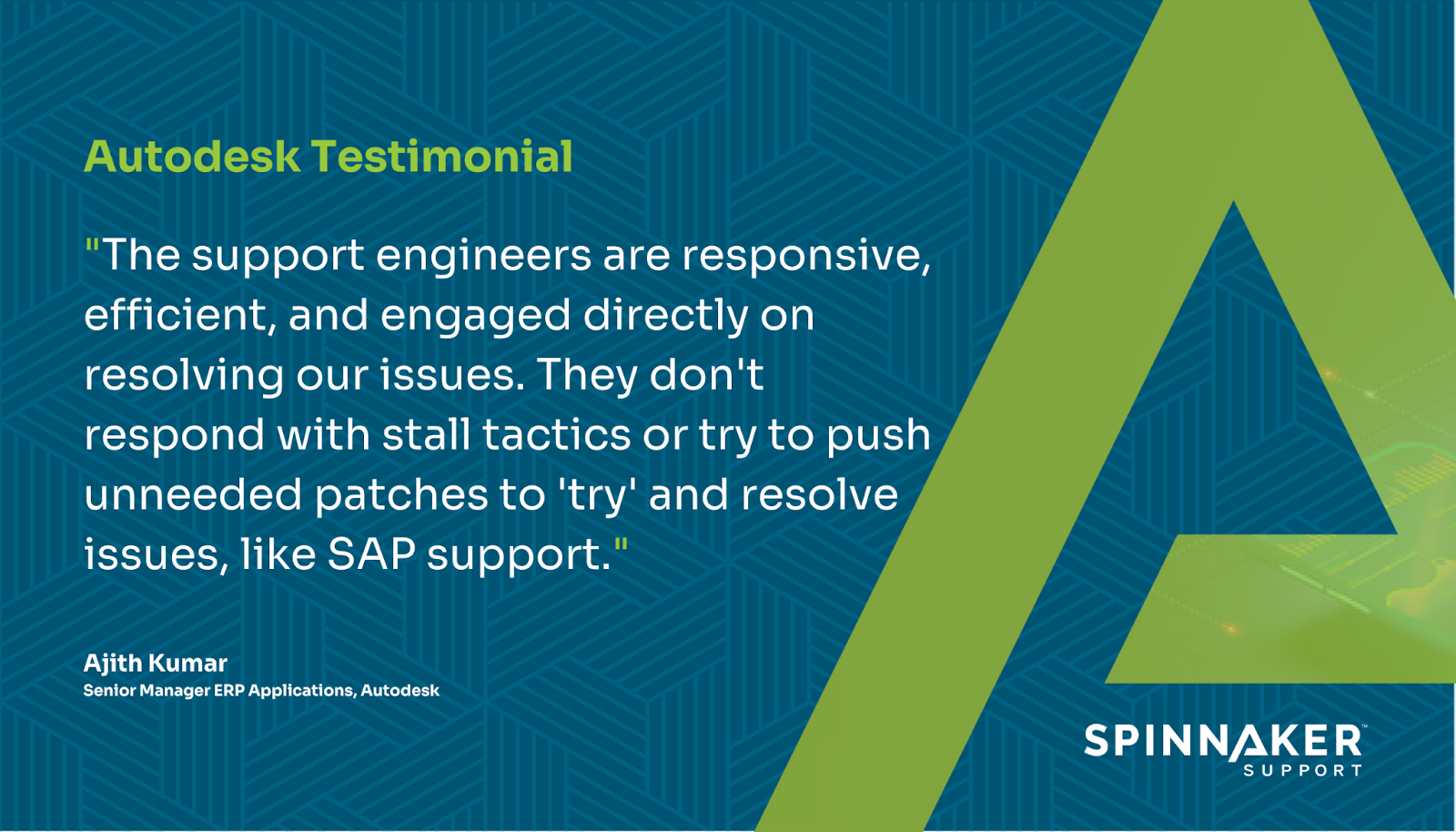
Benefit from tax and regulatory support
The always-changing tax, legal, and regulatory scenarios can’t work with the one-size-fits-all updates that software vendors provide.
We constantly monitor, research, and consolidate requirements for all regulations and their updates, so you don’t have to do it.
You get on-time and accurate updates, and we help you implement these in your systems.
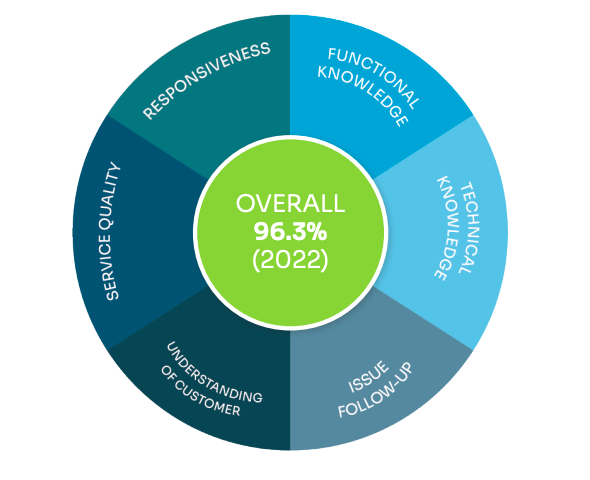
Thanks to our personalized and responsive support, customers gave Spinnaker a 96.3% satisfaction score in 2022.
Contact Spinnaker Support and learn more about our services
if you’re not yet ready to transition to S/4HANA, take advantage of 3PS support and save on migration, implementation, and support costs. With Spinnaker Support’s holistic approach, you get roadmap planning assistance and advisory services on virtualization, cloud migration, license compliance, and audit defense.
For more, contact us and learn how you can stay on your own schedule with comprehensive support and security.


